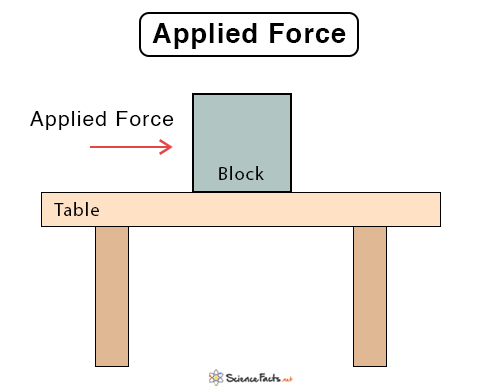Planck’s Constant
The Planck constant is a physical constant that characterizes the mathematical equations of quantum mechanics. It describes the behavior of waves and particles, including that of light.
History
Max Planck coined the term in 1900 when calculating the energy radiated by a black body, a perfect absorber of radiant energy. According to him, light is transmitted, emitted, or absorbed in discrete packets of energy called quanta. In some respects, the quantum of light behaves as an electromagnetic wave, whereas in others, it is an electrically neutral particle. This was eventually known as the photon, a term applied to the quanta of other members of the electromagnetic spectrum, such as X-rays and gamma rays.
Based on his work on this, Planck formulated a law, known as Planck’s radiation law, that describes the spectral energy distribution of the electromagnetic radiation emitted by a black body at a definite temperature. Planck also determined the value of the Boltzmann constant from this derivation.
Mathematical Formulations
The energy of each photon is h times the frequency of light. Mathematically, if we denote its energy as E, and its frequency as ʋ, then the Planck-Einstein relation says,
E = hʋ
This is an extremely small amount of energy. Now, the following formula connects the wavelength λ, frequency ʋ, and the speed of light c.
ν = c/λ
Therefore, the Planck-Einstein relation can be rewritten as,
E = hc/λ
This is another equation involving Planck’s constant. Now, the de Broglie wavelength λ of any particle is associated with its linear momentum p by Planck’s constant as given by the equation below.
λ = h/p
Reduced Planck’s Constant
In the rotational motion calculations, it is natural to use the angular frequency ω instead of the linear frequency ʋ. In those cases, reducing Planck’s constant by a factor of 2π is useful. The resulting constant is called the reduced Planck’s constant, and denoted by ħ (pronounced as ‘h-bar’). Hence,
ħ = h/2π
Since ω = 2πʋ, the energy of a photon with angular frequency ω is given by,
E = ħω
On the other hand, the linear momentum p can be expressed as,
p = ħk
Where k is the wavenumber or the spatial frequency of the wave. It is the number of waves that reside over a particular distance.
In 1923, the Planck-Einstein relationship was generalized by French physicist and Nobel laureate Louis de Broglie. According to him, light and all matter could exhibit wave-like behavior, following the concept of wave-particle duality. Hence, Planck’s constant holds good for not only the quantum wavelength of photons but also that of any particle. This postulate, verified by experiments soon after, is valid throughout the quantum theory.
Planck’s Constant Value
Its value depends on the system of units chosen. In the SI system, the value of h is 6.626 070 15 ×10-34 Joule · second. In the electron-volts unit, it is 4.135 667 696 × 10-15 eV · second. The CGS system’s value is 6.6261 × 10-27 erg · s. It has the dimension of physical action, similar to that of angular momentum. In the SI system, the product of h and the speed of light in vacuum (hc) comes to be 1240 eV · nm.
Applications
Other than its significance in quantum theory, it is a constant on the sub-atomic scale. Atomic unit systems are partly based on Planck’s constant. Since it is connected with only a small amount of energy, in terms of our daily experience, a unit such as a mole of energy could be far more relatable. That can be calculated by multiplying the energy of a photon by the Avogadro number (approx. 6.022 × 1023 mol−1).
It implies that the dynamics of any physical system cannot take any arbitrary value. It should be a multiple of a very small value, better known as the “quantum of action” or Planck’s constant. This, in turn, explains why, in many cases, such as for atoms or monochromatic light, only certain energy levels are allowed, and the intermediary levels are forbidden.
Heisenberg’s Uncertainty Principle states that a particle’s momentum and position cannot be simultaneously measured with high accuracy. It relies on Planck’s constant for its probabilistic calculations. Planck’s constant determines the size of the confined area that can be produced by the fundamental forces to contain any particle within it. Time and energy also follow this rule.
The reduced Planck’s constant is one of the four fundamental constants in the Hartree system of atomic units. It represents the dimension of action with a numerical value equal to unity by definition. The International Committee for Weights and Measures has proposed to redefine the standard kilogram in terms of Planck’s constant, owing to its invariant nature. This attempt to derive the definition of kilogram from entirely natural sources takes the help of Einstein’s mass-energy equivalence relation (E = mc2) along with the E = hʋ equation.
Energy balance has been employed to provide an alternative definition. The instrument can accurately measure the mass of an object by the voltage and strength of an electric current. The expression for the Rydberg constant associated with atomic spectra contains h.
Planck Constant and the Photoelectric Effect
The photoelectric effect refers to the emission of electrons from a surface when light falls on it. These electrons are, therefore, known as photoelectrons. The renowned physicist Albert Einstein tried to explain the effect in terms of the quantization of light.
According to Einstein, light energy is not transferred as a continuous wave but as packets of energy or quanta, which are the same as the energy elements mentioned by Max Planck in his theory. The kinetic energy of the photoelectrons (E) is directly proportional to the frequency of the incident light (f), the constant of proportionality being nothing but Planck’s constant. This postulate, which was later verified experimentally, gave way to the modern version of the Planck-Einstein relation.
E = hf
He received the Nobel Prize in Physics in 1921 for his work on the Photoelectric Effect. When substituted in the photoelectric equation, the work function for a particular metal also allows the determination of Planck’s constant. The photoelectric equation is
hf = ɸ + Ek
where f is the frequency of the incident light, ɸ is the work function, and Ek is the maximum kinetic energy of the photoelectrons. The work function of a metal is the minimum energy required to emit an electron from a surface.
Besides the many significances cited above, it has provided scientists with an interesting and expanding research area. It has made theoretical physicists wonder if the constant became zero at some point in time and space. What would be the consequences. Would it imply obvious destruction of quantization, giving rise to a continuous energy distribution. Then, at that point, quantum Physics would give way to classical Physics, defining the classical limit. With Planck’s constant, the possibilities are endless. There could be more to come soon.
-
References
Article was last reviewed on Friday, April 4, 2025








your value for the Planck constant is wrong!
please correct or explain, please
I am very disturbed that such a mistake could sneak in
Thanks,
Raven Scott
Thank you for your comment. We have corrected the value.